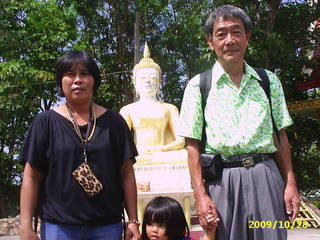2011年08月16日
東北高速無料化 「ただ乗り」許せば意味がない
The Yomiuri Shimbun (Aug. 14, 2011)
Free riders make mockery of toll-free Tohoku expressways
東北高速無料化 「ただ乗り」許せば意味がない(8月13日付・読売社説)
One of the most glaring deficiencies of the populist policies espoused by Prime Minister Naoto Kan and the Democratic Party of Japan has been exposed.
菅民主党政権のポピュリズム体質のひずみが、また一つ露呈したと言えるだろう。
Many drivers have been taking advantage of the exemption on expressway tolls for trucks in the disaster-struck Tohoku region to travel without paying.
東北地方の高速道路無料化に便乗したトラックの「ただ乗り」問題である。
Hundreds of long-distance truck drivers bound for Tokyo and its vicinity from western Japan have exploited loopholes in this system by taking a longer route to get on or off at a toll-free section and avoid paying.
西日本から東京方面などへ向かう長距離トラックが、わざわざ遠回りして無料化の対象区間で乗り降りし、高速料金を浮かせるという“裏技”が横行している。
The system was intended to smooth the flow of goods to disaster areas by lowering transportation costs. トラックを対象とした無料化は本来、輸送コストを引き下げて被災地向けの物流を円滑にすることが目的だった。
However, a large number of truckers that have nothing to do with recovery work have abused the system by repeatedly traveling long distances on expressways for free.
ところが、復興支援とは無関係のトラックが制度の不備を突き、ただ乗りを繰り返している。
This has resulted in traffic often backing up from toll gates as far as driving lanes, and frustrated ordinary drivers.
料金所から走行車線まで続く長い渋滞に、一般ドライバーからは不満の声が上がっている。
On the other side of the coin, trucking companies and related businesses in disaster-hit areas have welcomed the toll-free system.
一方で、被災地の運送業者などは無料化を歓迎している。
===
Flawed from the beginning
We think the Land, Infrastructure, Transport and Tourism Ministry should survey residents in affected areas and conduct fact-finding investigations regarding the toll-free system.
If the ministry concludes the system is doing more harm than good, it should be dumped.
国土交通省は地元の意見や実態を調査し、無料化による副作用の方が大きいと判断したら、トラックの無料化を打ち切るべきだろう。
We believe there might have been problems with making Tohoku expressways toll-free from the very beginning.
そもそも東北無料化の制度自体に無理があったのではないか。
Since June 20, vehicles driven by March 11 disaster victims, people who evacuated from around the Fukushima No. 1 nuclear power plant, and midsize or larger trucks have had their tolls waived.
6月20日から始まった無料化は、被災者が乗る車と、トラックなど中型以上の車が対象になった。
These vehicles are exempt from paying when starting from or arriving at toll gates on 20 sections of expressways in Tohoku and parts of Ibaraki and Niigata prefectures.
東北全域と茨城、新潟両県の一部の高速20路線で乗り降りした場合、料金がかからない。
To use the system, drivers need certificates issued by municipal governments that prove they are disaster victims. However, trucks do not need these certificates and are not even asked about the purpose of their travel. 被災者は自治体の被災証明が必要だが、トラックは不要で、走行目的もチェックされない。
Consequently, trucks can travel without paying on expressway sections that have no tollgates.
途中で料金所を通過しない路線を選べば、全区間を無料で走れる。
Here's one case that highlights the system's flaws.
例えば、こんな具合だ。
A truck drives from the Kansai region via the Meishin, Chuo, Keno or Kita-Kanto expressways and passes a tollbooth at the Mito Interchange of the Joban Expressway, which is in a toll-free section.
関西から名神、中央、圏央、北関東などの高速を走り、無料化対象の常磐道水戸インターチェンジ(IC)で降りる。
The truck then makes a U-turn and drives back through the same tollgate--again without having to pay.
This would enable the truck to reach its actual destination in Tokyo or neighboring areas without paying a single yen.
すぐにUターンして水戸ICから乗り、本来の目的地の東京方面を目指す。
===
System must be reviewed
A transport ministry survey conducted in late July found about 800 of 6,000 trucks that went through tollgates of the Mito Interchange from 7 a.m. to 7 p.m. returned to those gates--but in the opposite direction--within one hour.
国土交通省が先月下旬に調査したところ、午前7時から午後7時までに水戸ICを降りたトラック約6000台のうち、約800台が1時間以内に戻ってきた。
This meant one or two of every 10 trucks were suspected of unfairly using the toll-free system, according to the ministry.
10台のうち1〜2台は、便乗トラックの疑いがあるという。
It is also problematic that narrow streets used by children going to school and residential roads near interchanges have become clogged with heavy trucks.
Many locals have complained about the trucks making dangerous U-turns and the noise they generate.
IC付近の狭い通学路や生活道路に大型トラックがあふれ、危険なUターン走行や騒音を訴える声が相次いでいるのも問題だ。
Although making a U-turn around interchanges on national highways is illegal, some truck drivers have turned around at parking lots of commercial establishments and other places. The result is that the situation remains uncorrected.
周辺の国道はUターン禁止になったが、トラックは沿道の商業施設駐車場などで転回しており、事態は一向に改善していない。
The DPJ's campaign pledge to make all expressways toll-free is foolish because even people who do not use expressways will be forced to bear financial burdens related to them.
民主党が公約に掲げる全国の高速無料化は、利用しない人にも負担を強いるおかしな制度だ。
The confusion sparked by the toll-free Tohoku expressways should be an opportunity to put the DPJ's toll abolition plan under the microscope.
今回の東北無料化での混乱を、見直しの契機とすべきである。
(From The Yomiuri Shimbun, Aug. 13, 2011)
(2011年8月13日01時27分 読売新聞)
Free riders make mockery of toll-free Tohoku expressways
東北高速無料化 「ただ乗り」許せば意味がない(8月13日付・読売社説)
One of the most glaring deficiencies of the populist policies espoused by Prime Minister Naoto Kan and the Democratic Party of Japan has been exposed.
菅民主党政権のポピュリズム体質のひずみが、また一つ露呈したと言えるだろう。
Many drivers have been taking advantage of the exemption on expressway tolls for trucks in the disaster-struck Tohoku region to travel without paying.
東北地方の高速道路無料化に便乗したトラックの「ただ乗り」問題である。
Hundreds of long-distance truck drivers bound for Tokyo and its vicinity from western Japan have exploited loopholes in this system by taking a longer route to get on or off at a toll-free section and avoid paying.
西日本から東京方面などへ向かう長距離トラックが、わざわざ遠回りして無料化の対象区間で乗り降りし、高速料金を浮かせるという“裏技”が横行している。
The system was intended to smooth the flow of goods to disaster areas by lowering transportation costs. トラックを対象とした無料化は本来、輸送コストを引き下げて被災地向けの物流を円滑にすることが目的だった。
However, a large number of truckers that have nothing to do with recovery work have abused the system by repeatedly traveling long distances on expressways for free.
ところが、復興支援とは無関係のトラックが制度の不備を突き、ただ乗りを繰り返している。
This has resulted in traffic often backing up from toll gates as far as driving lanes, and frustrated ordinary drivers.
料金所から走行車線まで続く長い渋滞に、一般ドライバーからは不満の声が上がっている。
On the other side of the coin, trucking companies and related businesses in disaster-hit areas have welcomed the toll-free system.
一方で、被災地の運送業者などは無料化を歓迎している。
===
Flawed from the beginning
We think the Land, Infrastructure, Transport and Tourism Ministry should survey residents in affected areas and conduct fact-finding investigations regarding the toll-free system.
If the ministry concludes the system is doing more harm than good, it should be dumped.
国土交通省は地元の意見や実態を調査し、無料化による副作用の方が大きいと判断したら、トラックの無料化を打ち切るべきだろう。
We believe there might have been problems with making Tohoku expressways toll-free from the very beginning.
そもそも東北無料化の制度自体に無理があったのではないか。
Since June 20, vehicles driven by March 11 disaster victims, people who evacuated from around the Fukushima No. 1 nuclear power plant, and midsize or larger trucks have had their tolls waived.
6月20日から始まった無料化は、被災者が乗る車と、トラックなど中型以上の車が対象になった。
These vehicles are exempt from paying when starting from or arriving at toll gates on 20 sections of expressways in Tohoku and parts of Ibaraki and Niigata prefectures.
東北全域と茨城、新潟両県の一部の高速20路線で乗り降りした場合、料金がかからない。
To use the system, drivers need certificates issued by municipal governments that prove they are disaster victims. However, trucks do not need these certificates and are not even asked about the purpose of their travel. 被災者は自治体の被災証明が必要だが、トラックは不要で、走行目的もチェックされない。
Consequently, trucks can travel without paying on expressway sections that have no tollgates.
途中で料金所を通過しない路線を選べば、全区間を無料で走れる。
Here's one case that highlights the system's flaws.
例えば、こんな具合だ。
A truck drives from the Kansai region via the Meishin, Chuo, Keno or Kita-Kanto expressways and passes a tollbooth at the Mito Interchange of the Joban Expressway, which is in a toll-free section.
関西から名神、中央、圏央、北関東などの高速を走り、無料化対象の常磐道水戸インターチェンジ(IC)で降りる。
The truck then makes a U-turn and drives back through the same tollgate--again without having to pay.
This would enable the truck to reach its actual destination in Tokyo or neighboring areas without paying a single yen.
すぐにUターンして水戸ICから乗り、本来の目的地の東京方面を目指す。
===
System must be reviewed
A transport ministry survey conducted in late July found about 800 of 6,000 trucks that went through tollgates of the Mito Interchange from 7 a.m. to 7 p.m. returned to those gates--but in the opposite direction--within one hour.
国土交通省が先月下旬に調査したところ、午前7時から午後7時までに水戸ICを降りたトラック約6000台のうち、約800台が1時間以内に戻ってきた。
This meant one or two of every 10 trucks were suspected of unfairly using the toll-free system, according to the ministry.
10台のうち1〜2台は、便乗トラックの疑いがあるという。
It is also problematic that narrow streets used by children going to school and residential roads near interchanges have become clogged with heavy trucks.
Many locals have complained about the trucks making dangerous U-turns and the noise they generate.
IC付近の狭い通学路や生活道路に大型トラックがあふれ、危険なUターン走行や騒音を訴える声が相次いでいるのも問題だ。
Although making a U-turn around interchanges on national highways is illegal, some truck drivers have turned around at parking lots of commercial establishments and other places. The result is that the situation remains uncorrected.
周辺の国道はUターン禁止になったが、トラックは沿道の商業施設駐車場などで転回しており、事態は一向に改善していない。
The DPJ's campaign pledge to make all expressways toll-free is foolish because even people who do not use expressways will be forced to bear financial burdens related to them.
民主党が公約に掲げる全国の高速無料化は、利用しない人にも負担を強いるおかしな制度だ。
The confusion sparked by the toll-free Tohoku expressways should be an opportunity to put the DPJ's toll abolition plan under the microscope.
今回の東北無料化での混乱を、見直しの契機とすべきである。
(From The Yomiuri Shimbun, Aug. 13, 2011)
(2011年8月13日01時27分 読売新聞)
【このカテゴリーの最新記事】
-
no image
-
no image
-
no image
-
no image
-
no image
この記事へのコメント
コメントを書く





